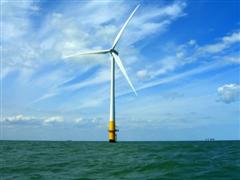
The journal Energy Policy has produced a study claiming that by 2030 the entire world could be operating on a combination of wind, solar, geothermal, and wave power. While achieving this would require a massive retooling of the world’s energy infrastructure, it is all doable with current technology and at a affordable cost. The study’s authors, Mark Delucchi and Mark Jacobson note that all that would be required is the political will to make this happen.
The plan calls for building of about four million 5 MW wind turbines, 1.7 billion 3 kW roof-mounted solar photovoltaic systems, and around 90,000 300 MW solar power plants. These would be backed by geothermal and wave generation devices whose power output fluctuates less over the course of the days or seasons. All the assumptions are based on using technology already in place at this scale somewhere today.
The execution of such a plan over the next two decades would require an “Apollo-level” commitment by successive administrations in the U.S. alone. China and several European countries are already committed to massive green energy programs. The global implications of such a shift in energy technology would benefit the climate as well as the economies and foreign policies of countries like the U.S. that have a huge dependence on foreign fossil fuels.
However, given the current depressed economy there is little appetite for infrastructure maintenance, much less the desire to rebuild anything. It’s also unclear the current government could muster a new generational program given the level of corporate influence and the inherent polarization it operates under. The long term benefits of such a program are enormous, but the short term investment will likely prove an insurmountable hurdle.
Still, it’s encouraging to know a fossil fuel free future is possible without new inventions.
